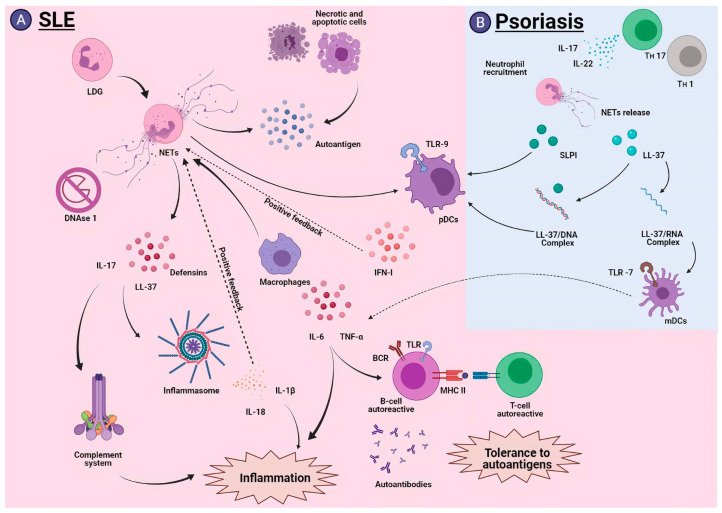Figure 5.
NETs in SLE and psoriasis. (A) During the development of SLE, LDGs are the main producers of NETs, which accumulate due to the DNAse 1 inhibition preventing their degradation. NETs have detrimental effects in SLE, since they release components such as LL-37 and IL-17 that activate the inflammasome and the complement system. NETs are internalized by macrophages, which release proinflammatory cytokines that lead to activation of autoreactive B cells and subsequent presentation to T cells and tolerance to autoantigens. Finally, NETs activate pDCs efficiently and stimulate IFN-I production, generating positive feedback to release more NETs. (B) Th17 cells are the main mediators of psoriasis by secreting IL-17; they promote neutrophil recruitment, and subsequently NET release. Their components stimulate the activation of pDCs directly (SLPI) or by DNA complexes (LL-37), to produce more IFN-I. In addition, LL-37 can form RNA complexes that promote the activation of mDCs and exacerbate the inflammatory process. SLE, systemic lupus erythematosus; LDG, low-density granulocytes; NET, neutrophil extracellular trap; LL-37, cathelicidin; IL-17, interleukin-17; pDC, plasmacytoid dendritic cells; IFN-I, type I interferon; SLPI, secretory leukocyte protease inhibitor; mDC, myeloid dendritic cells; mDC, myeloid dendritic cells. Created with BioRender.com.

